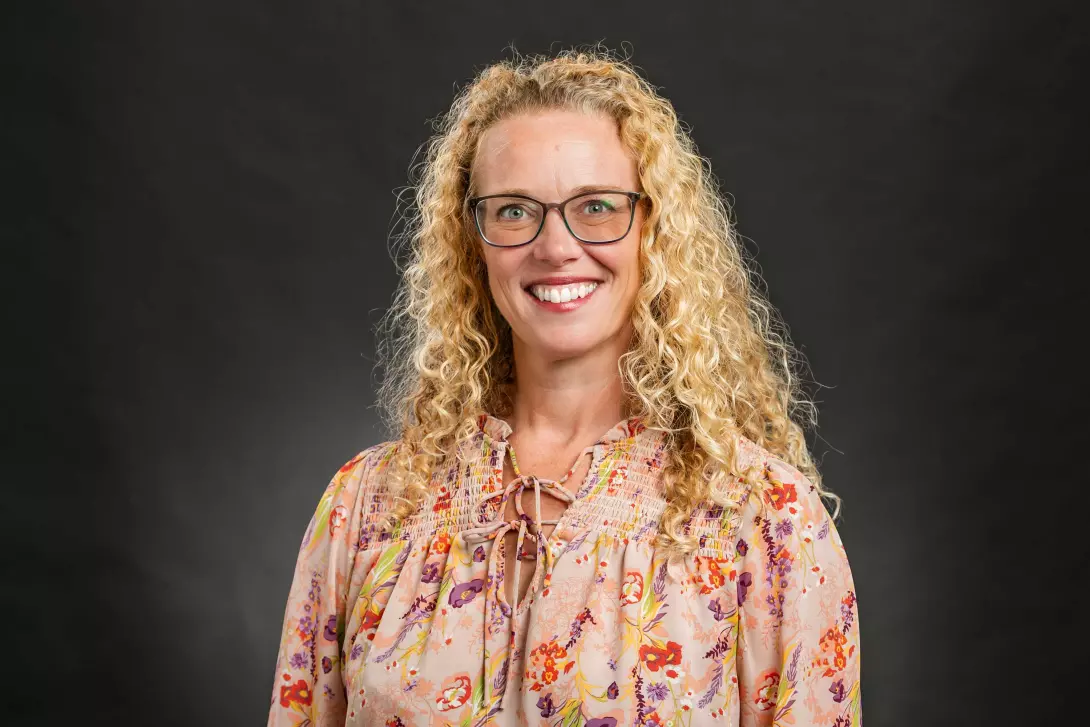Assessment at Ashland University
Assessment is a systematic, ongoing process of collecting, analyzing, interpreting and acting on information related to the goals and outcomes for the central mission of the university, student learning and success. Assessment answers the questions:
- What are we trying to do?
- How well are we doing it?
- How can we improve what we are doing?
The assessment process includes identifying areas of strength, as well as areas that need improvement, at curricular, co-curricular and institutional levels. Assessment examines how the components of the institution function together as a whole to fulfill the university’s mission. All assessment activities focus on improving programs and services, increasing student success and raising institutional quality. The assessment process helps ensure that Ashland is continually improving and providing students with the best possible educational experience.
Student Learning Outcome Assessment
Student learning outcome assessment is the ongoing process of:
- Establishing clear, measurable expected outcomes for student learning
- Ensuring that students have sufficient opportunities to achieve those outcomes
- Systematically gathering, analyzing and interpreting evidence to determine how well student learning matches expectations
- Using the resulting information to understand and improve student learning. (Suskie, 2009)
Active involvement in student learning outcomes assessment aligns with the transformational experiences component of the university strategic plan, Rich History, Bold Future: Ashland 2025.
Establishing clear, measurable expected outcomes for student learning
The assessment process begins with learning outcomes that flow from the mission and vision of the institution. Student learning outcomes articulate intended student learning. Learning outcomes exist at all levels of the university: institutional, college, program and course. Each academic program, co-curricular program and academic support unit has developed program-level student learning outcomes that align with the institutional student learning outcomes.
At the course level, instructors develop learning outcomes that align with relevant program-level goals/outcomes.
Ensuring that students have sufficient opportunities to achieve defined outcomes
Curriculum mapping is a method that aligns instruction with desired program outcomes. A curriculum map is a matrix showing the relation of each course in the program to each program student learning outcome. The curriculum map allows faculty to see where opportunities are provided for students to obtain the defined outcomes.
Curriculum mapping can reveal gaps in the curriculum and strengthen the design of the assessment plan. The process can also improve communication among faculty, improve program coherence and increase the likelihood that students achieve program-level outcomes.
Systematically gathering, analyzing and interpreting evidence to determine how well student learning matches expectations
A strong assessment program uses multiple methods of collecting information that indicates student obtainment of defined student learning outcomes. A combination of direct and indirect measures of student learning and the use of both formative and summative methods is recommended.
Direct and Indirect Methods of Assessment
Direct assessments provide direct examination or observation of the student knowledge and skills defined in the outcomes. Common direct assessment methods include:
- Embedded questions on exams
- Papers
- Capstone assignments or courses
- Portfolios of students’ work
- Performances (presentation, recital, etc.)
- Licensure exams
Direct assessment methods provide a sampling of what students know or are able to do. Direct methods provide strong evidence of student learning.
Indirect assessment methods evaluate a student’s perception of their achieved learning. Common indirect methods include:
- Surveys
- Exit interviews
- Focus groups
Indirect assessment is useful as a supplement to direct assessment.
Formative and Summative Assessment
Formative assessment monitors student progress toward a learning goal or outcome. Formative assessments provide students with feedback on their progress toward the desired learning.
Summative assessments are typically administered at the end of a course or program to measure the level of mastery of learning outcomes.
Using the resulting information to understand and improve student learning
The ultimate goal of assessment is continuous improvement. The assessment process is not complete until the findings have been used for improvement. The steps involved in closing the loop include:
- Summarizing the findings
- Sharing the findings
- Discussing the results
- Developing action plans for revision of outcomes, curriculum, teaching methods, assessment methods, etc.
Implementing the action plan and assessing the effectiveness of the actions for continuous improvement
Institutional Student Learning Outcomes
Ashland University, guided by our Christian heritage, is a comprehensive, private university that provides a transformative learning experience, shaping graduates who work, serve and lead with integrity in their local, national, and global communities. With this in mind, the university has created four Institutional Student Learning Outcomes (ISLOs). These goals guide our teaching and curriculum, as all course and programs foster development of one or more of these outcomes. Below are the four ISLOs used to access undergraduate and graduate learning.
Undergraduate Student Learning Goals and Outcomes
1. Intellectual Development
Students will analyze evidence, apply specialized knowledge, and think critically to solve problems.
Pertaining to specialized knowledge acquired through education or experience students will be able to do one of the following:
- Analyze a complex topic or issue by dividing it into its parts, identifying the parts and the relationship between them, and evaluating the quality of evidence used to support the topic/issue.
- Synthesize issues, objects or works in original ways that result in informed conclusions or judgments.
2. Ethical Development
Students will apply principles of integrity and ethical decision-making to address real-world issues.
Students will be able to do one of the following:
- Apply ethical perspectives/concepts to a real or hypothetical ethical question or issue.
- Model integrity, honesty, and fairness in dealings with others and with confidential information.
3. Civic Engagement
Students will apply knowledge, skills, and values in order to work, serve, and lead in their communities.
Students will be able to do one of the following:
- Apply knowledge from academic disciplines and other institutional experiences to a campus community/civic/societal issue.
- Articulate how to use one's knowledge and skills to contribute in civic, work, or leadership roles.
4. Global Responsibilities and Intercultural Competence
Students will exhibit competence for constructive engagement within global and intercultural contexts.
Students will be able to do one of the following:
- Analyze and explain the impact of culture and experience on one’s world view and behavior.
- Describe themselves and their culture through the perception of others.
Graduate Student Learning Goals and Outcomes
1. Intellectual Development
Students will analyze problems and draw on evidence to make informed decisions through
scholarship.
2. Ethical Development
Students will demonstrate the ability to make ethically sound decisions in their professional field.
3. Civic Engagement
Students will exhibit professionalism and engagement within a broader professional community.
4. Global Responsibilities and Intercultural Competence
Students will analyze and explain the impact of culture and experience on one’s world view and
behavior
Director of Assessment and College Assessment Coordinators
To help ensure quality assessment across our university, colleges, and programs the university employs a Director of Institutional Assessment and has designated assessment coordinators for each college. Please find their contact information below.

Jared S. Rosenberger
Director of Institutional Assessment
Assistant Professor of Sociology
Criminal Justice and Sociology | Center for Fine Arts RM 240
(w) 419-289-5655
jrosenb4@ashland.edu

Cindy Moseman
CAS Assessment Coordinator
Assistant Dean, College of Arts and Sciences
210B Center for the Arts
401 College Avenue
Ashland University
Ashland, OH 44805
(w) 419-289-5293
cmoseman@ashland.edu

Alison Rossi
COBE Assessment Coordinator Professional Instructor of Fashion Merchandising
Marketing/Hospitality Management/Fashion Merchandising Department
Office 232
(w) 419.289.5296
arossi@ashland.edu

Dawn Morton
Director of Advanced Degree Programs and Assessment
Assistant Professor of Christian Formation and Leadership
Ashland Theological Seminary,
419-289-5113 Office
dmorton@ashland.edu

Jill Matthes Baxter
CONHS Assessment Coordinator
Academic Assessment Committee Chair
Associate Professor
DNP Program Director, Interim HSL Director
College of Nursing and Health Sciences | Mansfield 185
(w) 419.521.6827
jmatthe2@ashland.edu

Peter Ghazarian
COE Assessment Coordinator Assistant Professor, Doctoral Program in Leadership Studies
Director, Quality Assurance & Accreditation
130 Dwight Schar College of Education
(w) 419.289.5339 | (c) 330.234.9819
pghazari@ashland.edu
Assessment Resources
AU resources for yearly assessment reporting
External Web Resources
- Internet Resources for Higher Education Outcomes Assessment (Assessment Commons)
- http://assessmentcommons.org/view-all-resources/
- National Institute for Learning Outcomes Assessment (NILOA)
- http://learningoutcomeassessment.org/
General Resources
- Student Learning Outcomes: http://www.learningoutcomeassessment.org/TFcomponents.htm
- Program resources (NILOA): http://www.learningoutcomesassessment.org/SLOSresources.html
- Curriculum Mapping: http://manoa.hawaii.edu/assessment/howto/mapping.htm
- How to construct a simple, sensible, useful departmental assessment process (B.E. Walvoord): https://drive.google.com/file/d/0B_0xM_gi_zLsVUpFYjNFbHlya1U/view
Assessment Glossary
Alignment – A logical connection between the curriculum and the expected outcomes
Assessment – "Assessment is the systematic collection, review and use of information about educational programs undertaken for the purpose of improving student learning and development." (Palomba & Banta, 1999)
Assessment Plan - A document that outlines the program mission/goals, desired student learning outcomes, benchmarks for attainment of outcomes, learning processes (e.g., courses, activities, assignments) that contribute to students' abilities reach the program's outcomes (this may be shown in the form of a curriculum map) and timeline
Benchmark - A point of reference for measurement; a standard of achievement against which to evaluate or judge performance
Closing the loop - Using assessment results for improvement
Curriculum Map - A matrix showing the relation of each course in a program to each program student learning outcome
Direct measures – Assessment measures that provide evidence in the form of student products or performances that demonstrate actual learning. For example, course assignments, exams and quizzes, standardized tests, pass rates on licensure or subject area tests and research or capstone projects
Formative assessment – Assessment that occurs over the progression of a course or program, intended to adjust curriculum or pedagogy to improve student learning outcomes; formative and summative (see below) assessment should be used together to understand and improve student learning
Goal– A broad, desired aim or purpose
Indirect measures – Assessment measures that imply that learning has occurred by capturing perceptions of or revealing characteristics associated with learning; used to supplement direct evidence. For example, course evaluations, surveys, focus groups or exit interviews, as well as statistics on graduate school attendance, job placement and graduation rates
Learning outcomes - Statements that identify the knowledge, skills or attitudes that students will be able to demonstrate, represent or produce as a result of a given educational experience. There are different levels of learning outcomes: course, program, college and institution.
Norming - Also called "rater training." The process of educating raters to evaluate student performance and produce dependable scores. Typically, this process uses criterion-referenced standards and analytic or holistic rubrics. Raters must participate in norming sessions before scoring student performance. (Adopted from University of Hawaii at Manoa)
Objective – A purposeful and specific action that operationalizes a goal. An objective is a measurable, tangible and attainable description of the performance to be demonstrated.
Outcome – The extent to which a student learning goal or objective is achieved, based on identified evidence.
Portfolio – A collection of a student’s work over a period of time that displays his or her progress and growth in a specific area of study. The portfolio is evaluated using established scoring criteria. Common materials included in a portfolio are papers, tests, rating scales, projects, resume, reflections, etc.
Program Assessment - Ongoing process designed to monitor and improve student learning. Faculty develop explicit statements of what students should learn (i.e., student learning outcomes), verify that the program is designed to foster this learning (alignment), collect data/evidence that indicate student attainment (assessment results) and use these data to improve student learning (close the loop). (Allen, M., 2008). (Adopted from University of Hawaii at Manoa)
Program Review - The act of using information to make a judgment about the effectiveness, performance or value of a specific program, project, department, etc.
Rubric – An objective scoring tool that clearly states expectations for an assignment. Rubrics are used to evaluate a student’s performance on a task through criteria determined by the instructor.
Summative assessment – Assessment that occurs at the end of a course or program to determine overall achievement of learning goals; formative (see above) and summative assessment should be used together to understand and improve student learning.